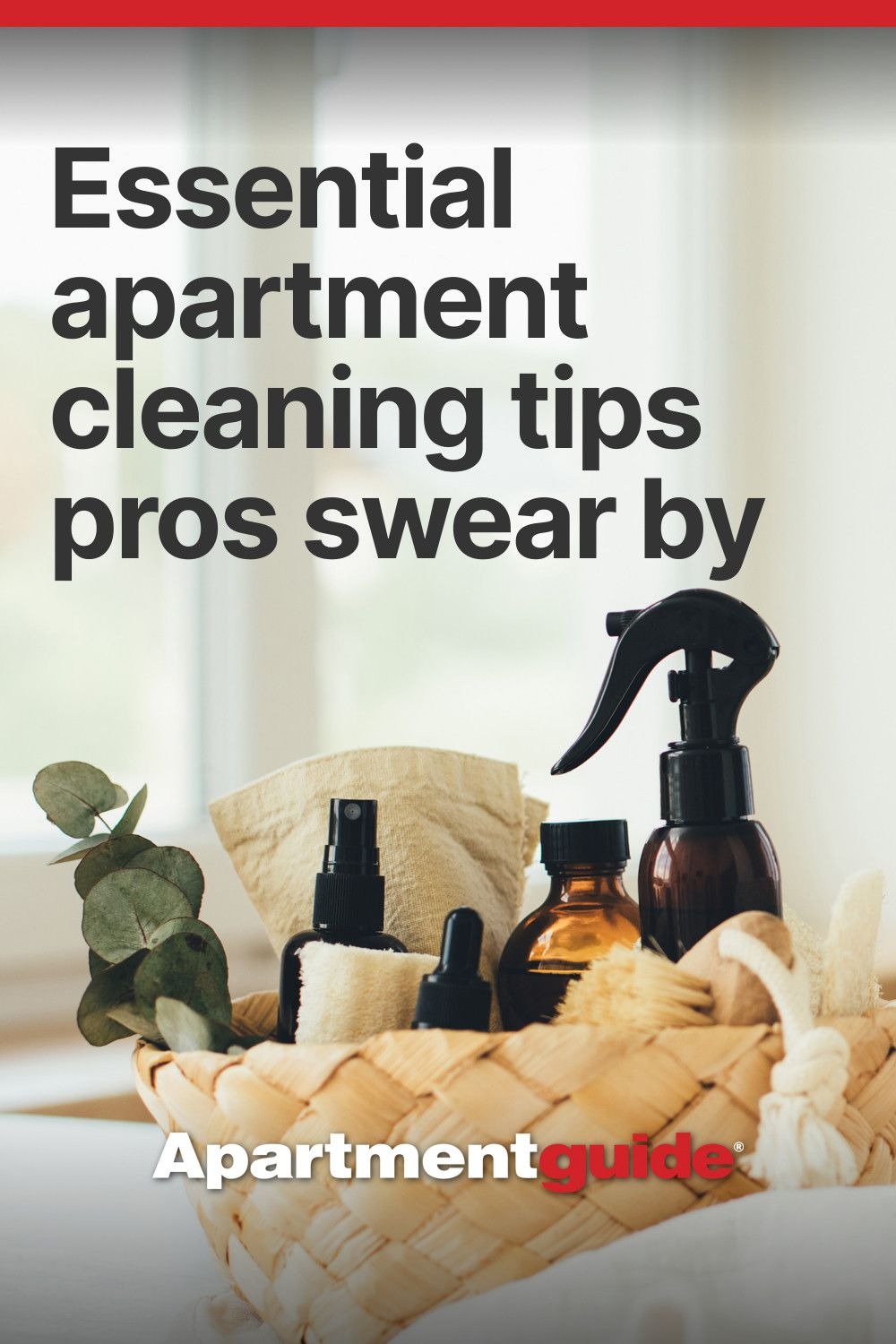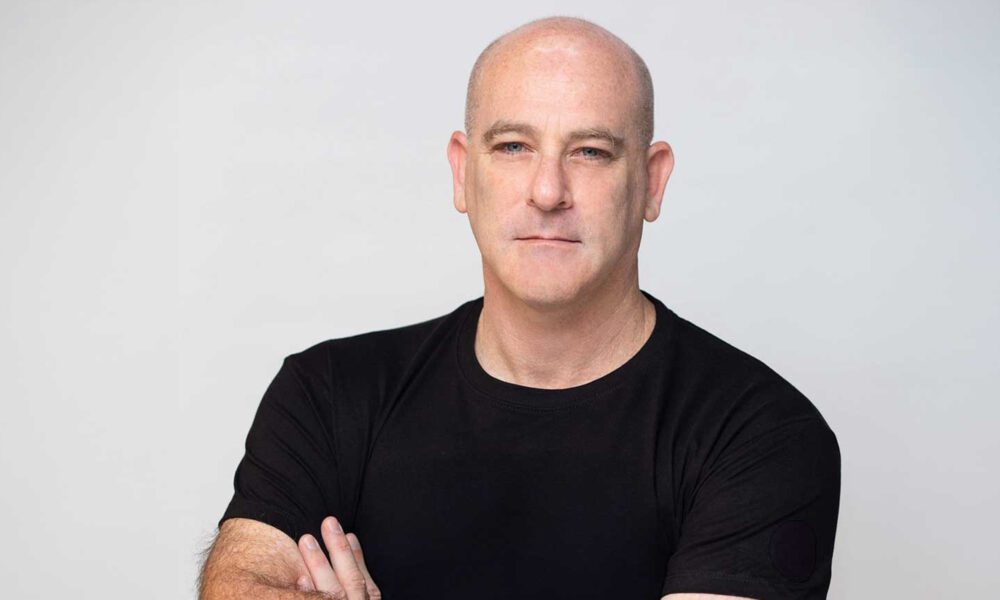Professional cleaners know the truth. A Queens apartment requires completely different cleaning strategies than Manhattan spaces. Borough-specific challenges affect everything from dust accumulation to pest prevention. House Cleaning Fleet professionals adapt their methods based on location, building type, and neighborhood characteristics.
Queens spans 109 square miles with diverse housing stock. From Astoria row houses to Forest Hills high-rises, each neighborhood presents unique cleaning demands. Your cleaning routine should reflect these differences. Generic approaches fail when applied to Queens’ specific environmental factors.
Understanding Queens’ Unique Cleaning Challenges
Queens sits between two airports. LaGuardia and JFK create unique air quality issues. Airplane exhaust particles settle on surfaces daily. Windows facing flight paths accumulate black residue faster. Outdoor furniture needs weekly cleaning during summer months.
The borough’s industrial zones affect nearby residential areas. Long Island City apartments near warehouses deal with truck exhaust. Neighborhoods around Flushing Creek face different pollutants than those near Forest Park. Each area requires adapted cleaning frequencies and products.
Transportation impacts on cleanliness:
- Elevated subway lines create specific dust patterns
- Bus depots increase diesel particulates in air
- Highway proximity affects indoor air quality
- Street parking brings more outdoor dirt inside
- Limited public transportation increases car dependency
Ground-level apartments in Queens face more pest challenges than Manhattan high-rises. Garden apartments attract different insects than fifth-floor units. Single-family homes deal with mice differently than apartment buildings. Professional cleaning service NYC teams understand these distinctions.
Queens-specific environmental factors:
- Tree pollen from extensive green spaces
- Construction dust from constant development
- Industrial emissions from manufacturing zones
- Salt air effects in coastal neighborhoods
- Seasonal flooding impacts in certain areas
Neighborhood-by-Neighborhood Cleaning Guide
Astoria and Long Island City
These rapidly developing neighborhoods blend old and new. Pre-war buildings sit next to glass towers. Construction dust affects established residents daily. Waterfront properties face humidity challenges. Greek restaurants and food trucks create neighborhood-specific odors.
Astoria apartments near Steinway Street need extra kitchen degreasing. Restaurant density affects residential spaces. Cooking oils travel through shared ventilation. Professional cleaners recommend enzyme-based degreasers for these areas.
Long Island City’s new developments have modern HVAC systems. These filter air better but require regular maintenance. Glass-heavy architecture means more window cleaning. Concrete floors in converted lofts need special care. Open floor plans accumulate dust differently than traditional layouts.
Cleaning priorities for Astoria/LIC:
- Weekly window cleaning for construction dust
- Monthly HVAC filter changes
- Enzyme treatments for cooking odors
- Humidity control near waterfront
- Industrial floor care for lofts
- Balcony maintenance for high-rises
Flushing and Corona
Dense populations create unique challenges. Flushing’s food markets bring specific cleaning needs. Multi-generational housing means more foot traffic. Smaller apartments require efficient storage solutions. Language barriers sometimes complicate service arrangements.
Corona’s proximity to Citi Field affects cleaning schedules. Game days bring increased street debris. Parking becomes difficult for cleaning services. Noise restrictions apply during events. Stadium lights attract specific insects during summer.
Traditional cleaning products from Asian markets work differently with NYC water. Many residents prefer specific brands unavailable elsewhere. Apartment cleaning service teams stock diverse products for these neighborhoods.
Cultural considerations for cleaning:
- Shoe removal customs affect entryway design
- Cooking styles require stronger ventilation
- Traditional remedies complement professional cleaning
- Different hygiene priorities need respect
- Communication preferences vary by household
- Scheduling around cultural events matters
Forest Hills and Rego Park
These established neighborhoods feature pre-war buildings and Tudor-style homes. Tree-lined streets create seasonal cleaning patterns. Fall leaves clog gutters and tracked indoors. Spring pollen affects allergies more than other areas.
Co-op buildings have strict cleaning regulations. Certain hours prohibit vacuuming. Some buildings ban specific cleaning products. Professional services must carry additional insurance. Board approval sometimes required for regular services.
Shopping centers like Queens Center Mall increase foot traffic. Retail therapy means more packaging waste. Dry cleaning chemicals from numerous shops affect air quality. Professional cleaning addresses these commercial impacts on residential spaces.
Jamaica and Hollis
These neighborhoods mix single-family homes with apartment complexes. Yard maintenance affects indoor cleanliness. Grass clippings and soil get tracked inside. Basement apartments face unique moisture challenges.
The LIRR and subway convergence creates transportation hub issues. Commuter traffic increases pollution. Station proximity means more dust and debris. Properties near tracks experience vibration-related settling.
Diverse housing stock requires varied cleaning approaches. Victorian homes need gentle wood care. Modern apartments use different products. Row houses share walls affecting cleaning schedules. Each property type has specific requirements.
Bayside and Whitestone
Coastal proximity brings salt air challenges. Metal fixtures corrode faster. Windows need special treatment. Outdoor furniture requires protective coatings. Hurricane season preparations include deep cleaning.
Larger homes mean more square footage to maintain. Multi-level houses need different equipment. Attics and basements add cleaning complexity. Professional house cleaning New York services bring appropriate tools for each level.
School districts affect cleaning patterns. Family homes need child-safe products. Play areas require frequent sanitization. After-school activities increase mess. Seasonal sports track in specific debris types.
Comparing Queens to Manhattan Cleaning Requirements
Space and Storage Differences
Queens apartments average 850 square feet versus Manhattan’s 650. Extra space means more cleaning time but better storage options. You can buy supplies in bulk. Cleaning equipment fits in closets rather than under beds.
Manhattan’s vertical living creates different challenges. Elevator scheduling affects service timing. Doorman buildings have specific protocols. Trash disposal happens differently. Queens’ horizontal layout simplifies access but increases cleaning area.
Storage advantages in Queens:
- Dedicated cleaning supply closets
- Room for full-size vacuum cleaners
- Bulk purchase storage capacity
- Separate areas for different products
- Better ventilation for chemical storage
- Space for cleaning equipment maintenance
Cost Comparisons Between Boroughs
Queens cleaning services cost 20-30% less than Manhattan equivalents. Lower overhead reduces service prices. Parking availability decreases transportation costs. Larger service areas enable route efficiency.
Supply costs vary significantly. Queens has more discount stores. Bulk buying becomes practical. Local shops offer competitive prices. Manhattan’s convenience stores charge premiums for basics.
Typical service costs by apartment size:
- Studio: Queens $60-80, Manhattan $80-120
- One-bedroom: Queens $80-100, Manhattan $120-160
- Two-bedroom: Queens $100-130, Manhattan $160-200
- Three-bedroom: Queens $130-170, Manhattan $200-280
Transportation and Accessibility
Queens’ parking availability benefits cleaning services. Teams arrive with more equipment. Response times improve without parking searches. Service windows become more reliable.
Manhattan’s public transportation access helps cleaners without vehicles. However, carrying supplies on subways limits service quality. Professional equipment requires vehicle transport. Queens’ car-friendly infrastructure supports better service.
Building access differs significantly. Queens walk-ups have direct entry. Manhattan high-rises require coordination. Doormen and security affect scheduling. Service elevators have restricted hours.
Seasonal Cleaning Strategies for Queens Weather
Spring Challenges (March-May)
Queens’ extensive tree coverage creates pollen storms. Neighborhoods near Cunningham Park see highest levels. Allergies affect 45% of residents during peak season. Professional cleaning during spring reduces symptoms significantly.
Rain brings specific problems. Older homes develop leaks. Basements flood in low-lying areas. Humidity spikes require dehumidification. Mold prevention becomes critical during wet springs.
Spring cleaning priorities:
- Gutter cleaning before rain season
- Window screen installation and cleaning
- Pollen removal from surfaces
- Air purifier filter replacement
- Basement waterproofing check
- Attic ventilation inspection
Summer Strategies (June-August)
Humidity reaches 75% regularly. Without proper ventilation, mold grows quickly. Air conditioning becomes essential. Window units need monthly cleaning. Central air systems require professional maintenance.
Outdoor spaces need attention. Patios accumulate pollen and dust. Grills require deep cleaning. Outdoor furniture develops mildew. Professional maid service NYC includes exterior cleaning options.
Pest activity peaks during summer. Ants, mosquitoes, and flies increase. Proper cleaning prevents infestations. Food storage becomes critical. Garbage management requires daily attention.
Fall Preparation (September-November)
Leaf management dominates fall cleaning. Gutters clog without regular clearing. Leaves decompose creating mold. Tracked-in debris increases dramatically. Professional services handle comprehensive fall preparation.
Hurricane season affects cleaning schedules. Storm preparation includes securing outdoor items. Post-storm cleanup requires professional help. Water damage needs immediate attention. Insurance often covers professional storm cleaning.
Fall maintenance checklist:
- Heating system cleaning before first use
- Window sealing for energy efficiency
- Carpet cleaning before closing windows
- Chimney inspection for houses
- Storm window installation
- Outdoor furniture storage preparation
Winter Considerations (December-February)
Snow and salt create ongoing challenges. Entryways need constant attention. Floors require appropriate cleaning products. Salt damages wood and carpets without proper care.
Heating systems dry indoor air. Static electricity increases. Dust circulates more readily. Humidification becomes necessary. Professional cleaners adjust products for winter conditions.
Ice melt products track indoors. Pet-safe alternatives cost more but protect animals. Proper mat systems reduce tracking. Regular mopping prevents floor damage.
Building Types and Cleaning Approaches
Pre-War Buildings
Queens has numerous pre-war buildings with original features. Hardwood floors need restoration-safe products. Plaster walls require gentle cleaning. Original tile work demands special care.
Steam radiators collect dust in crevices. Professional tools reach difficult areas. Paint contains lead requiring careful handling. Asbestos possibilities affect cleaning methods.
Pre-war building specifics:
- Original hardwood maintenance schedules
- Radiator cleaning techniques
- Window weight system care
- Vintage fixture preservation
- Lead paint safety protocols
- Structural settling compensation
Post-War Developments
1950s-1970s buildings have different challenges. Parquet floors need specific care. Popcorn ceilings cannot be wet cleaned. Aluminum windows require special products.
These buildings often lack modern ventilation. Cooking odors linger longer. Moisture builds up faster. Professional cleaning includes air quality improvement strategies.
Modern Construction
New developments use different materials. Luxury vinyl needs specific cleaners. Quartz countertops require gentle products. Smart home systems complicate scheduling.
Green buildings have special requirements. LEED-certified properties mandate eco-friendly products. Energy recovery ventilators need maintenance. Solar panels affect roof cleaning.
Family Homes vs. Single-Occupant Spaces
Child-Friendly Cleaning Approaches
Queens houses many families with children. Non-toxic products become essential. Quick-dry solutions prevent slip hazards. Toy sanitization requires safe methods.
Play areas need frequent attention. High-touch surfaces require daily cleaning. Art supplies create unique stains. Food spills happen constantly. Professional cleaning companies offer family-safe service packages.
Child safety priorities:
- Plant-based cleaning products
- Allergen reduction protocols
- Toy and play area sanitization
- Carpet stain treatment
- Air quality improvement
- High-chair and crib cleaning
Pet Considerations
Queens’ pet ownership rates exceed Manhattan’s. Yards mean more dogs. Pets track in more outdoor debris. Hair and dander accumulate faster.
Professional cleaning addresses pet-specific issues. Enzyme cleaners eliminate odors. HEPA filtration removes dander. Special tools handle embedded fur. Regular service prevents permanent damage.
Senior Living Adaptations
Many Queens residents age in place. Cleaning services adapt for accessibility needs. Non-slip products prevent falls. Lighter equipment reduces strain.
Regular cleaning prevents health hazards. Dust affects respiratory conditions more. Clutter increases fall risks. Professional services provide stability and safety.
Cultural Diversity and Cleaning Preferences
International Cleaning Standards
Queens’ diversity means varied cleaning expectations. European residents expect different service levels. Asian households have specific requirements. Latin American families prioritize certain areas.
Professional services train staff in cultural sensitivity. Understanding preferences improves satisfaction. Respecting customs builds trust. Accommodation creates loyal customers.
Cultural accommodation examples:
- Removing shoes upon entry
- Using client-preferred products
- Scheduling around religious observances
- Understanding dietary cleaning needs
- Respecting privacy preferences
- Adapting communication styles
Language Accessibility
Service providers need multilingual capabilities. Clear communication ensures proper service. Written instructions help overcome barriers. Visual guides clarify expectations.
Technology assists with translation. Apps facilitate scheduling. Digital payment reduces confusion. Online reviews cross language barriers.
Technology and Innovation in Queens Cleaning
Smart Home Integration
Queens adopts smart home technology rapidly. Automated scheduling becomes standard. Voice assistants control cleaning robots. Security systems coordinate with services.
Professional services integrate with platforms. Apps track cleaning history. Digital payments simplify billing. Real-time updates provide transparency.
Eco-Friendly Innovations
Queens residents increasingly demand green cleaning. Sustainable products gain popularity. Reusable supplies reduce waste. Energy-efficient equipment saves resources.
Professional home cleaning service offers eco-certifications. Green cleaning costs compare favorably. Health benefits justify any premium. Environmental impact matters to residents.
Cost-Saving Strategies for Queens Residents
Group Buying Power
Neighbors coordinate services for discounts. Building-wide contracts reduce individual costs. Shared supplies lower expenses. Community organization creates bargaining power.
Multi-family houses split service costs. Roommates share cleaning expenses. Extended families coordinate schedules. Group arrangements benefit everyone.
Efficient Scheduling
Bi-weekly service balances cost and cleanliness. Monthly deep cleaning maintains standards. Seasonal intensive cleaning prevents problems. Strategic scheduling maximizes value.
Off-peak scheduling reduces rates. Flexible timing offers savings. Advance booking secures better prices. Regular service costs less than sporadic cleaning.
Common Mistakes Queens Residents Make
Underestimating Outdoor Impact
Queens’ outdoor spaces affect indoor cleanliness. Gardens track in soil. Trees drop debris. Porches accumulate dust. Ignoring exterior areas increases interior cleaning needs.
Using Manhattan-Focused Services
Companies specializing in Manhattan may not understand Queens needs. Travel time increases costs. Equipment might not suit houses. Local services provide better value.
Neglecting Basement and Attic Spaces
These areas affect whole-house air quality. Mold grows unnoticed. Pests establish colonies. Regular cleaning prevents expensive problems.
Improper Product Selection
Hard water requires specific products. Older fixtures need gentle cleaners. Modern materials demand appropriate care. Wrong products cause permanent damage.
Professional Service Selection Guide
Evaluating Cleaning Companies
Check Queens-specific experience. Verify insurance covers houses. Confirm equipment suits your space. Request references from similar properties.
Essential qualifications checklist:
- NYC business license
- Liability insurance minimum $1 million
- Worker’s compensation coverage
- Background-checked employees
- Queens-based or nearby operations
- House cleaning experience
- Appropriate equipment variety
- Flexible scheduling options
- Clear pricing structure
- Satisfaction guarantees
Interview Questions for Services
Ask about experience with your building type. Inquire about product options. Discuss scheduling flexibility. Clarify pricing structures. Understand cancellation policies.
Red Flags to Avoid
Extremely low prices indicate problems. Cash-only operations lack legitimacy. No insurance means liability risks. Poor communication predicts service issues.
Health Benefits of Professional Cleaning
Allergy Reduction
Queens’ diverse flora creates year-round allergies. Professional cleaning reduces triggers significantly. HEPA filtration removes microscopic particles. Regular service prevents accumulation.
Studies show 78% symptom reduction with professional cleaning. Medical costs decrease substantially. Quality of life improves markedly. Investment in cleaning pays health dividends.
Mental Health Improvements
Clean environments reduce anxiety. Organized spaces improve focus. Professional cleaning eliminates overwhelming tasks. Stress levels decrease measurably.
Time saved enables self-care. Relationships benefit from clean homes. Productivity increases in organized spaces. Mental health justifies cleaning investment.
Future Trends in Queens Cleaning Services
Technological Advancement
AI scheduling optimizes routes. Smart sensors detect cleaning needs. Robotic assistants handle routine tasks. Innovation reduces service costs.
Virtual consultations assess needs. Automated billing simplifies payment. Digital feedback improves service. Technology enhances customer experience.
Sustainability Focus
Zero-waste cleaning gains traction. Refillable products reduce packaging. Electric vehicles lower emissions. Sustainability becomes standard practice.
Emergency Cleaning Situations
Natural Disaster Response
Queens faces flooding, storms, and power outages. Professional services provide emergency response. Quick action prevents permanent damage. Insurance often covers disaster cleaning.
House Cleaning Fleet offers 24/7 emergency service. Storm damage requires immediate attention. Water extraction prevents mold growth. Professional equipment ensures thorough cleanup.
Pest Infestation Preparation
Bed bugs require specific cleaning protocols. Roach treatments need preparation. Mouse problems demand deep cleaning. Professional services handle infestations properly.
Moving and Real Estate
Queens’ active real estate market creates cleaning demands. Move-out cleaning recovers deposits. Staging cleaning improves sales. Professional service impresses buyers.
Frequently Asked Questions
How does Queens cleaning differ from other NYC boroughs?
Queens presents unique challenges due to diverse housing types. Single-family homes require different approaches than Manhattan apartments. Larger spaces need more time but cost less per square foot. Parking availability improves service efficiency. Gardens and yards add exterior cleaning needs. Basement and attic maintenance becomes necessary. Professional services adapt techniques for Queens’ specific requirements.
What’s the average cost for house cleaning in different Queens neighborhoods?
Pricing varies by neighborhood and property type. Astoria apartments average $80-120 for standard cleaning. Forest Hills homes run $120-180. Bayside houses cost $150-220. Flushing apartments range $70-100. Jamaica homes average $100-150. Factors affecting price include square footage, condition, and service frequency. Regular service costs less than one-time deep cleaning.
Should I choose a Queens-based cleaning service or Manhattan company?
Queens-based services understand local challenges better. They know building types and neighborhood specifics. Travel time reduces increasing costs from Manhattan services. Local companies provide faster emergency response. Queens services maintain appropriate equipment for houses. References from neighbors prove reliability. Supporting local businesses strengthens community connections.
How often should Queens homes be professionally cleaned?
Cleaning frequency depends on multiple factors. Families with children benefit from weekly service. Pet owners need bi-weekly minimum. Single professionals manage with monthly cleaning. Seasonal deep cleaning helps everyone. Allergy sufferers require more frequent service. Outdoor space increases cleaning needs. Professional consultation determines optimal schedule.
What special services do Queens homes require?
Queens properties need services Manhattan apartments don’t. Gutter cleaning prevents water damage. Basement waterproofing stops mold growth. Attic ventilation maintains air quality. Garage cleaning improves home access. Deck maintenance extends outdoor living. Driveway cleaning enhances curb appeal. Professional services offer comprehensive packages including these extras.
Making the Right Choice for Your Queens Home
Queens living offers space and community Manhattan cannot match. Proper cleaning maintains these advantages. Professional services understand borough-specific needs. Investment in cleaning improves property value and life quality.
Calculate true cleaning costs including time and supplies. Compare DIY expenses to professional rates. Factor in health benefits and stress reduction. Most Queens residents save money with professional cleaning.
Your Queens home deserves specialized care. Generic cleaning approaches fail to address unique challenges. Professional services provide expertise and efficiency. Make the smart choice for your family’s health and happiness.
Schedule a consultation today. Discuss your specific needs and concerns. Experience the difference professional cleaning makes. Transform your Queens home into the sanctuary you deserve.
Business Name: House Cleaning Fleet
Address: 175 E 96th St #1780, New York, NY 10128, United States
Phone Number: +1 212-812-2410
Website URL: https://housecleaningfleet.com
Google Maps URL: https://maps.app.goo.gl/ncdvcikn4FotUUNU7
Business Hours: Open 24 Hours (24/7 Service)





























